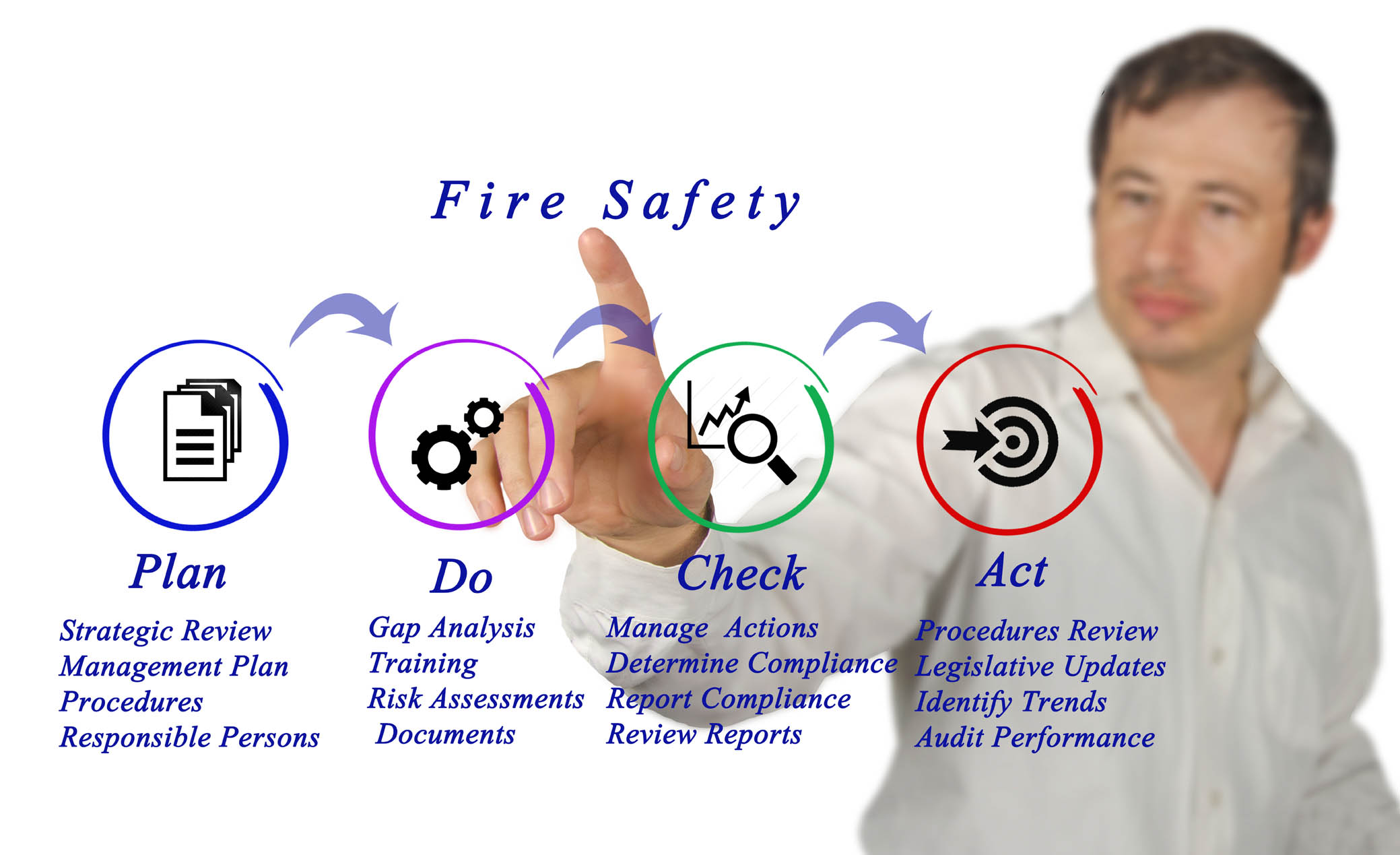A fire risk assessment allows you to assess your premises and identify ways to improve fire safety. If you omit to do this, you risk prosecution as it is a legal requirement to have a good quality, suitable and sufficient fire risk assessment in place for your rental property. This is even more imperative if you manage an HMO that is home to several tenants.
For you to successfully mitigate risk and make sure your fire risk assessment is effective and efficient, it is important to consider what could cause a fire to break out and address various issues in advance of the assessment taking place.
This might sound like a waste of time, but you should view the assessment as a final check rather than merely the start of your fire mitigation strategy. When damage to human life is at stake, it’s best to reduce risks as soon as possible.
UK-Fire Risk Assessments carry out fire risk assessments for a range of buildings and we work with our clients to help manage the risk of fire. So, if you have any questions about what we look for and how you can ensure your assessment goes smoothly, you can get in touch with us directly. Otherwise, below are a few things we pay attention to when reviewing properties for fire hazards.
Steps to Improving Fire Safety Compliance Before Your Risk Assessment
- During a fire risk assessment, you will need to provide evidence that you inspect your fire extinguishers and that you test emergency lighting, fire alarms and fire doors. You can easily find a template online for what a good record should look like, but this should generally include monthly checks as well as checks before new tenants move into a property. We will check that your records are up to date, organised and comprehensive. Ideally, you should be noting down things like the condition of your fire prevention equipment such as smoke detectors.
- We also check if there is an effective strategy for fire evacuations in place. The assessor will be looking to see that a drill has been carried out within the last twelve months and that procedures are clear and practical for what tenants should do in the event of a fire. The entire property must be easily evacuated if necessary, with exit passages clear and unobstructed.
- Evidence that your electrical and gas systems are inspected and suitably maintained. Poor electrical systems and gas works are one of the leading causes of accidental fires in the home. Your gas services should be inspected annually by qualified professionals with records that these have been carried out.
- We recommend ensuring that your premises are generally in good condition and that all appliances function as they should. Your fire risk assessor will look for areas of the property that may be vulnerable to combustion or ineffective at reducing the speed at which fires spread, such as fire doors that don’t shut. A sealed window, peeling wallpaper or tangled wires of a TV unit could all potentially lead to fires breaking out.
- Address the exterior as well as the interior. As well as interior hallways and passages being clear, you’ll also want to check that external alleys and walkways are easy to navigate in the event of a fire. Also, messy bins or general clutter outside could stop people from exiting a property during a fire, or be the cause of one breaking out in the first place.
Arranging a Residential Landlord Fire Risk Assessment?
Ultimately, it is always a good idea to review your premises ahead of a fire risk assessment so that you can make the process go as smoothly as possible and receive approval of your compliance with government fire safety regulations.

